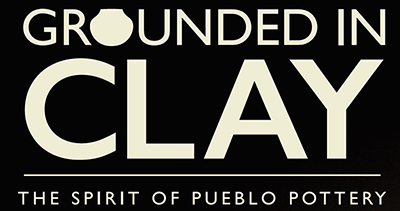Joseph Aguilar
San Ildefonso Pueblo
Curator Dr. Joseph Aguilar is an enrolled member of San Ildefonso Pueblo, and currently serves as an archaeologist with Bering Straits Native Corporation and as San Ildefonso’s Deputy Tribal Historic Preservation Officer. He received his PhD from the Department of Anthropology at the University of Pennsylvania.
Joseph chose the following for the Grounded in Clay exhibit:
Pottery’s Burden
The material culture of Pueblo people resides in the basements and exhibit cases of museums and institutions around the world. Pottery made by Ancestral Pueblo people makes up a significant portion of many collections. There are many reasons for this, but, inarguably, Pueblo pottery is one of the more physically durable forms of Pueblo material culture. It is more durable, for example, than a yucca basket, a woven cotton sash, or an ear of corn. Even if it has been broken, a piece of pottery retains its meaning or significance long after it has outlived its original intended purpose.
While pottery holds an important place in the lives of Pueblo people, its ubiquity has led some to wholly equate pottery with people. For better or worse, Pueblo pottery has become synonymous with Pueblo people. Anthropology, perhaps more than any other discipline, has perpetuated the idea that equates pottery types with cultures. Collectors, curators, students, and archaeologists also turn frequently to Pueblo pottery to learn about Pueblo culture and people, but more often they do so to admire the craft and form of the pottery itself. Collections of Pueblo people’s material culture in institutions worldwide have much to tell; Ancestral Pueblo pottery, as one of the most abundant forms of Pueblo material culture, is expected to do much of that telling. This is the burden that Pueblo pottery carries.
This polished red, cream-slipped, finely painted shallow bowl was broadly described by anthropologists nearly a century ago as a type of “Ancestral Pueblo pottery”—“Tewa polychrome,” a convenient term created by, and for, American anthropologists. While we are certain that Tewa people created and used this bowl, the descriptor “Tewa polychrome” has made American anthropologists comfortable making a number of assumptions about Tewa life that may not be in line with Tewa people’s ancestral knowledge. It is important to remember that objects such as this bowl are given voice through interpretive and experiential bias. If anthropology were to extend that view to the whole of Pueblo material culture, we might begin to see Pueblo pottery as being much more than the sum of its physical patterns. When understood through the agency of Pueblo people, pottery reveals the spirit of Pueblo people themselves.

